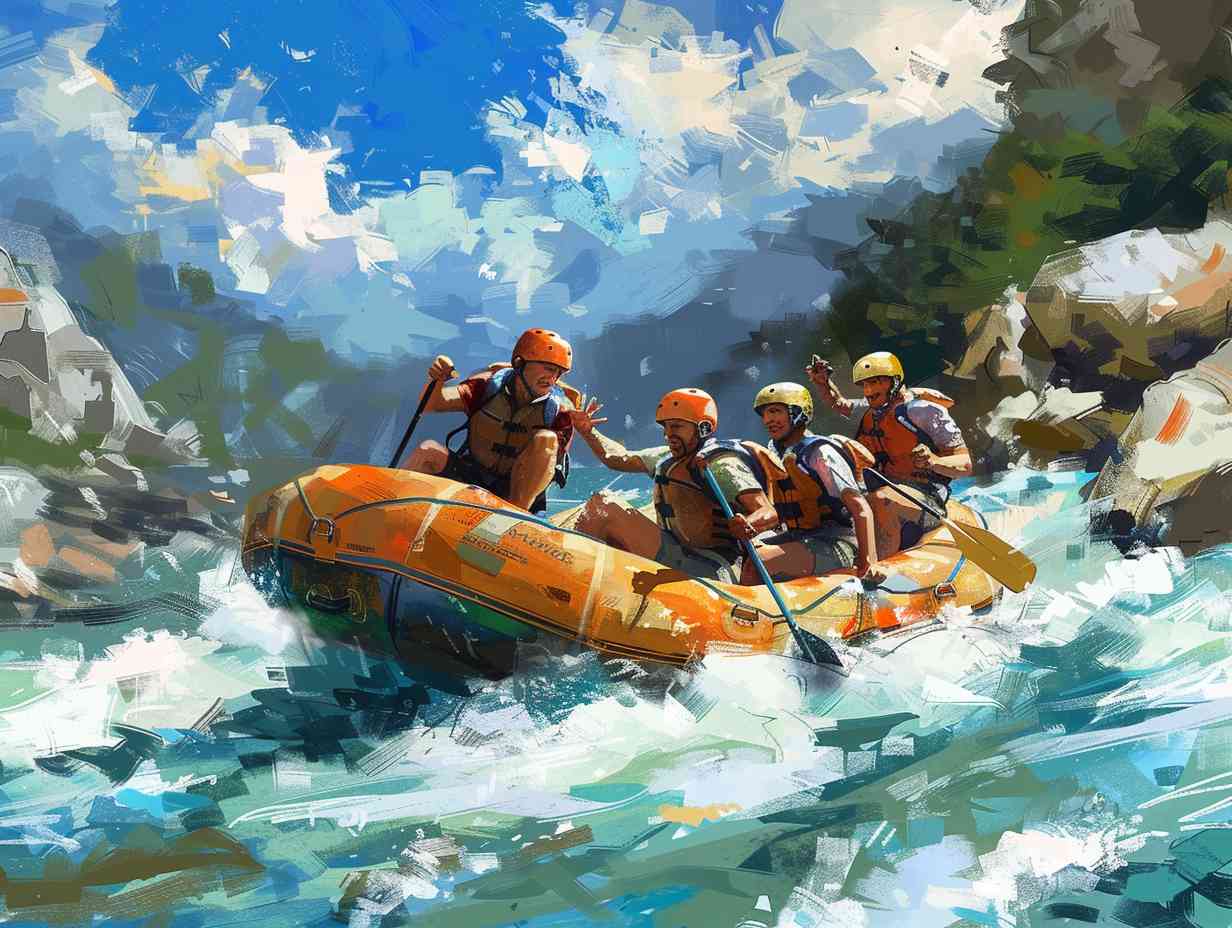
Types of Rafts Used

When pondering the plethora of possibilities for your next aquatic adventure, consider the various types of rafts used by enthusiasts worldwide.
From the resilience of inflatable rafts to the versatility of packrafts, the options are as diverse as the waters they navigate.
Each type offers unique features and benefits, catering to different preferences and needs on the river.
So, whether you crave stability, speed, or maneuverability, there’s a raft out there waiting to elevate your next journey on the water.
Key Takeaways
- Inflatable rafts are versatile, lightweight, and durable for various water activities.
- Self-bailing rafts offer a dry experience, safety, and maneuverability in challenging waters.
- Catarafts provide stability, versatility, and are ideal for rough waters and narrow passages.
- Rigid Inflatable Boats (RIBs) offer stability, durability, and versatility for different water sports and activities.
Inflatable Rafts
When you’re out on the water, inflatable rafts provide a versatile and convenient option for leisurely floating or conquering rougher waters. These rafts are lightweight, easy to transport, and simple to inflate, making them perfect for spontaneous trips or planned adventures.
Whether you’re exploring calm lakes, steering gentle rivers, or braving challenging rapids, inflatable rafts offer stability and maneuverability. They come in various sizes to accommodate different numbers of passengers, from solo riders to larger groups.
Additionally, inflatable rafts are often made from durable materials that can withstand bumps against rocks or branches. Overall, these rafts are a popular choice for recreational activities due to their portability and adaptability to different water conditions.
Self-Bailing Rafts
Self-bailing rafts efficiently drain water that enters the raft, ensuring a drier and more stable experience for passengers. These rafts come equipped with self-bailing floors that allow water to flow out through strategically placed ports, eliminating the need for manual bailing.
Here are three key benefits of self-bailing rafts:
-
Enhanced Safety: Self-bailing rafts prevent water from accumulating inside the raft, reducing the risk of capsizing and providing a safer environment for passengers.
-
Improved Maneuverability: By keeping water levels low, self-bailing rafts maintain better maneuverability, allowing for smoother navigation through rapids and obstacles.
-
Comfortable Ride: With water draining out automatically, passengers enjoy a more comfortable and dry ride, enhancing their overall rafting experience.
Catarafts

Catarafts, a unique type of raft consisting of two inflatable pontoons connected by a frame, offer excellent stability and versatility on the water. These rafts are known for their ability to navigate rough waters with ease, making them a popular choice for whitewater rafting enthusiasts.
The two separate pontoons provide a stable platform that can handle challenging river conditions while still offering a smooth and controlled ride. Catarafts are also easier to maneuver compared to traditional rafts, allowing you to navigate through narrow passages and around obstacles with precision.
With their durability and performance capabilities, catarafts are a reliable option for adventurers looking to conquer fast-flowing rivers and rapids.
Rigid Inflatable Boats (RIBs)
Rigid Inflatable Boats (RIBs) are a popular choice among water enthusiasts due to their unique combination of a solid hull and inflatable tubes. Here are some key reasons why RIBs are favored:
-
Stability: The solid hull of RIBs provides stability in the water, making them ideal for various activities such as fishing, diving, and water sports.
-
Durability: The solid construction of the hull enhances durability, ensuring that RIBs can withstand rough waters and challenging conditions.
-
Versatility: RIBs are versatile watercraft that can be used for leisure cruising, rescue operations, military applications, and even as tenders for larger vessels. Their adaptability makes them a top choice for a wide range of water activities.
Packrafts

Packrafts are lightweight inflatable watercraft that offer portability and versatility for various outdoor adventures. These compact rafts are perfect for traversing remote rivers, lakes, and even whitewater rapids.
Due to their inflatable nature, packrafts can be easily folded and carried in a backpack, making them ideal for hiking to secluded water bodies. Despite their small size, packrafts are durable and can withstand rugged terrains, providing a thrilling and safe experience for adventurers.
Whether you enjoy solo expeditions or group outings, packrafts are a great option for exploring the great outdoors. So next time you’re planning a wilderness trip, consider bringing along a packraft for an unforgettable water adventure.
Frequently Asked Questions
What Are the Best Techniques for Repairing a Punctured Inflatable Raft?
To repair a punctured inflatable raft, start by locating the hole. Clean the area around it, apply a patch and adhesive. Press firmly and allow it to dry. Inflate the raft and test for leaks.
How Do You Properly Store a Self-Bailing Raft During the Off-Season?
When storing a self-bailing raft during the off-season, make sure it’s clean and dry, deflate slightly to prevent damage, store in a cool, dry place away from direct sunlight, and periodically check for any issues.
Are Catarafts Suitable for Whitewater Rafting or Are They Better for Calmer Waters?
For whitewater rafting, catarafts are excellent due to their stability and maneuverability. They handle rough waters with ease, providing an exciting experience. In calmer waters, they might not be as efficient but can still offer a fun ride.
What Are the Advantages of Using a Rigid Inflatable Boat (Rib) Over Other Types of Rafts?
When considering raft options, a rigid inflatable boat (RIB) offers advantages. Its sturdy design provides excellent maneuverability and durability, making it ideal for various water conditions. RIBs are versatile, ensuring a safe and thrilling rafting experience.
Can Packrafts Be Easily Transported on Backpacking Trips or Do They Require Special Equipment for Transport?
Packing a packraft on backpacking trips can be simple. They’re lightweight and packable, requiring no special equipment. The ease of transport makes them a versatile choice for water adventures while keeping your gear light.
Conclusion
So there you have it, a rundown of the different types of rafts used for various adventures on the water.
It’s ironic, isn’t it? No matter how advanced the technology gets, sometimes the simplest inflatable raft can still provide the most fun and excitement.
Who needs fancy gadgets when a good old-fashioned raft can do the trick just fine?
Remember, it’s not about what you have, but how you use it that truly matters.
More information about Types of Rafts Used
Affiliate information declaration: We may earn revenue from the products referred on this page and participate in affiliate programs.


